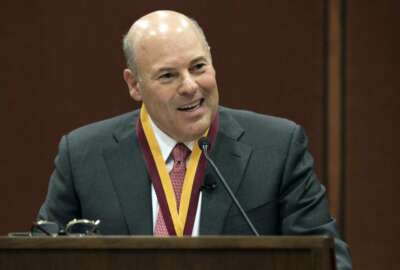

The new initiative, which USPS says will “enhance customer service by providing more consistent delivery times,” will start Saturday at nearly 400 facilities.
With Congress still seeking answers from the Postal Service about cost-cutting efforts that may also lead to temporary mail delays, the agency continues to roll out operational changes that would get mail carriers out on their routes as soon as possible.
In a memo to carriers, USPS leadership said it will launch the initiative Expedited to Street/Afternoon Sortation (ESAS) that “reduces morning office time to allow carriers to leave for the street earlier.”
The new initiative, which USPS said will “enhance customer service by providing more consistent delivery times,” will start Saturday, July 25, at nearly 400 facilities.
During this initiative, letter carriers won’t sort any mail during morning hours. Instead, workers would clock in, retrieve mail sorted from the previous day and limit mornings in the office to vehicle inspections and stand-up safety talks.
“Any unsorted First-Class flats will go directly to the street with the carrier and will be routed in delivery sequence while on the street,” the memo states.
This change in operations doubles down on internal memos USPS released earlier this month that seek to cut overtime and transportation costs. USPS warned these changes could result in some temporary mail delays, but the memo said post office management would address the “root causes” of those delays.
The National Association of Letters Carriers said Tuesday that USPS chose to test the initiative “unilaterally without NALC participation.” The union also said the initiative doesn’t meet the terms of its national labor agreement.
“NALC representatives are discussing the issues we have with this initiative with USPS representatives at the headquarters level. Shop stewards and branch officers should monitor the test process, review applicable contractual and handbook provisions, and file appropriate grievances where contract violations occur,” the union wrote.
The ESAS initiative expands on the longtime Expedited Preferential Mail (EPM) Delivery Program, which also reduces morning office time and allows carriers to leave for the street earlier. But under the EPM program, NALC said carriers still sort “preferential and time-value mail” in the morning before beginning their routes.
After finishing their route and returning to the post office, carriers working under EPM sort the majority of their mail for delivery for the next scheduled day.
USPS spokesman Dave Partenheimer said the Postal Service is “taking immediate steps to increase operational efficiency by re-emphasizing existing plans that have been designed to provide prompt and reliable service within current service standards.”
“By running operations on time and on schedule, we will enhance our ability to be sustainable so that we can continue to provide high-quality, reasonably-priced service to all people and businesses in the country,” Partenheimer said.
Meanwhile, the Postal Service is developing a long-term business plan that will look at ways for the Postal Service to regain financial stability. Members of the House Oversight and Reform Committee have repeatedly asked for this business plan for more than a year.
“The plan, which will be presented to the Board of Governors when it is finalized, will include new and creative ways to help us fulfill our mission, and will focus on the Postal Service’s strengths to maximize our prospects for long-term success,” Partenheimer said.
Meanwhile, top Democrats in the House and Senate have scrutinized changes to Postal Service operations that went into effect earlier this month.
Senate Homeland Security and Governmental Affairs Committee Ranking Member Gary Peters (D-Mich.) asked Postmaster General Louis DeJoy how plans to cut overtime and transportation costs fit in the agency’s upcoming 10-year business plan.
He also asked what role the USPS Board of Governors had in crafting the memo and whether the agency asked the Postal Regulatory Commission for an advisory opinion on its cost-cutting strategy.
“It is essential that the Postal Service not slow down mail or in any way compromise service for small businesses, rural communities, seniors and millions of Americans who rely on the mail,” Peters wrote.
Meanwhile, House Oversight and Reform Committee Chairwoman Carolyn Maloney (D-N.Y.) led colleagues in a letter asking DeJoy whether delays in mail delivery could impact mail-in ballots in November.
“While these changes in a normal year would be drastic, in a presidential election year when many states are relying heavily on absentee mail-in ballots, increases in mail delivery timing would impair the ability of ballots to be received and counted in a timely manner — an unacceptable outcome for a free and fair election,” Maloney wrote, along with government operations subcommittee chairman Gerry Connolly (D-Va.), national security subcommittee chairman Stephen Lynch (D-Mass.) and committee member Brenda Lawrence (D-Mich.)
Copyright © 2025 Federal News Network. All rights reserved. This website is not intended for users located within the European Economic Area.
Jory Heckman is a reporter at Federal News Network covering U.S. Postal Service, IRS, big data and technology issues.
Follow @jheckmanWFED

